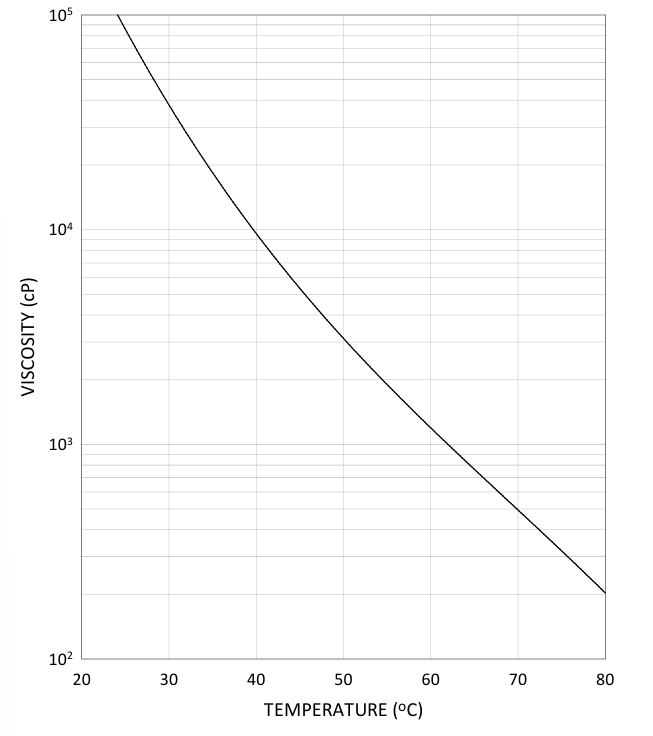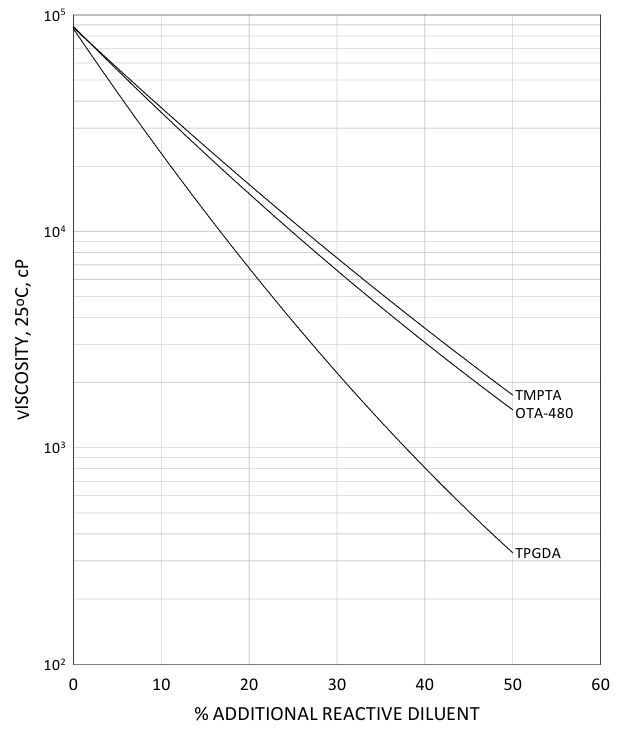Enhanced TDS
Identification & Functionality
- Blend
- No
- CASE Ingredients Functions
- Chemical Family
- Chemical Name
- Country of Origin
- Function
- Monomer
- Product Code
- MITM00384
- Single Ingredient
- Yes
- Synonyms
- Bisphenol A Diglycidyl Diacrylate Oligomer, Bisphenol A-Epichlorohydrin Acrylate
- Technologies
- Product Families
Features & Benefits
- CASE Ingredients Features
- Performance Highlights
EBECRYL® 3503 is characterized by:
- Light color
- Fast cure response
- Good wetting of pigments, matting agents, and substrates
UV/EB cured properties based on EBECRYL® 3503 are characterized by the following performance properties:
- High surface hardness
- High gloss
- Good chemical resistance
- Water resistance
The actual properties of UV/EB cured products also depend on the selection of other formulation components such as reactive diluents, additives and photoinitiators.
Applications & Uses
- Application Method
- Coating End Applications
- Compatible Substrates & Surfaces
- Cure Method
- Markets
- Applications
- Product Applications
Formulated UV/EB curable products containing EBECRYL 3503 may be applied via direct or reverse roll, offset gravure, metering rod, slot die, knife over roll, air knife, curtain and immersion coating methods.
EBECRYL® 3503 is suggested for use in:
- Coatings for paper, rigid plastics (i.e. polycarbonate), metal
- Wood fillers and sealers
- Pigmented coatings
- Low gloss overprint varnishes
Properties
- Physical Form
Technical Details & Test Data
- Viscosity vs Temperature
EBECRYL® 3503 - Viscosity vs. Temperature:

Graph illustrates the change in viscosity of EBECRYL® 3503 with increasing temperature.
- Viscosity vs Percentage Added Reactive Diluent
EBECRYL® 3503 - Viscosity Reduction With Reactive Diluents:

Viscosity Reduction:
- Graph shows the viscosity reduction of EBECRYL® 3503 with propoxylated glycerol triacrylate (OTA-480), trimethylolpropane triacrylate (TMPTA), and tripropylene glycol diacrylate (TPGDA).
- .Although viscosity reduction can be achieved with non-reactive solvents, reactive diluents are preferred because they are essentially 100 percent converted during UV/EB exposure to form a part of the coating or ink, thus reducing solvent emissions.
- The specific reactive diluents used will influence performance properties such as hardness and flexibility.
Packaging & Availability
- Packaging Type
Principal Information
- Group Principal Number
- S000001
- Principal
Storage & Handling
- Storage Conditions
- Care should be taken not to expose the product to high temperature conditions, direct sunlight, ignition sources, oxidizing agents, alkalis or acids.
- This might cause uncontrollable polymerization of the product with the generation of heat.
- Storage and handling should be in stainless steel, amber glass, amber polyethylene or baked phenolic lined containers.
- Procedures that remove or displace oxygen from the material should be avoided.
- Do not store this material under an oxygen free atmosphere.
- Dry air is recommended to displace material removed from the container.
- Wash thoroughly after handling.
- Keep container tightly closed.
- Use with adequate ventilation.
Other
- Appearance
- Clear liquid
- Item Number
- Temperature Control
- No
- USA/DOT UN Number
- Not Applicable
- Chemical Properties
Value Units Test Method / Conditions Acid Value max. 3.0 mg KOH/g mg KOH/g Epoxy Group Content max. 0.5 % % - Mechanical Properties
Value Units Test Method / Conditions Elongation at Break 3.1 % % UV cured, 125µm thick films Tensile Modulus 470000.0 psi psi UV cured 125 μm thick films Tensile Strength 10300.0 psi psi UV cured 125 μm thick films - Optical Properties
Value Units Test Method / Conditions Color Scale max. 2.0 Gardner Gardner Gardner Color Scale - Physical Properties
Value Units Test Method / Conditions Density 1.16 g/mL g/mL at 25°C Viscosity 850.0-1150.0 mPa.s mPa.s at 60°C - Shelf Life & Stability
Value Units Test Method / Conditions Shelf Life 0.0 d d
